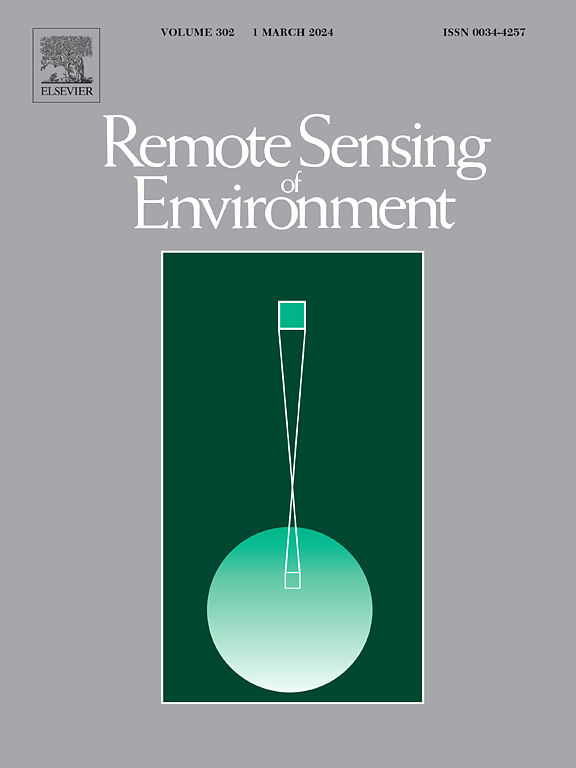Accurately detecting nocturnal cloud over land using next-generation geostationary satellite imagery: A case study using advanced Himawari imager data for Australia
IF 11.1
1区 地球科学
Q1 ENVIRONMENTAL SCIENCES
引用次数: 0
Abstract
Cloud detection is a requisite step of almost all terrestrial applications using optical remote sensing imagery, as many applications are sensitive to cloud contamination. In this research, a new algorithm has been developed to detect nocturnal cloud (from sunset to sunrise) in Himawari-8/9 AHI (Advanced Himawari Imager) imagery over land, with simultaneous aims of maximising accuracy, simplicity and efficiency. The algorithm consists of two cloud detection methods: (i) proxy emissivity temporal variation, measured by pixel wise standard deviation within an hour; and (ii) monthly clear surface proxy emissivity database which is updated daily. Results from the two components are combined based on their respective confidence. A validation was conducted against 6 years of CALIPSO LiDAR data over the Australian continent, showing an overall accuracy of 96 %. The algorithm requires no ancillary data. It is also computationally efficient and so is suitable for near real-time (i.e., within 2 h) operation and can be readily adopted to similar operational geostationary sensors.
使用下一代地球同步卫星图像精确探测陆地上的夜间云:使用澳大利亚先进Himawari成像仪数据的案例研究
云检测是使用光学遥感图像的几乎所有地面应用的必要步骤,因为许多应用对云污染很敏感。在这项研究中,开发了一种新的算法,用于在Himawari-8/9高级Himawari成像仪(Advanced Himawari Imager)的陆地图像中检测夜间云(从日落到日出),同时以最大限度地提高精度、简单性和效率为目标。该算法包括两种云检测方法:(i)代理发射率时间变化,以一小时内逐像元标准偏差测量;(ii)逐月更新的晴空地表代理辐射率数据库。两个分量的结果根据各自的置信度组合在一起。对CALIPSO在澳大利亚大陆6年的激光雷达数据进行了验证,显示出96%的总体精度。该算法不需要辅助数据。它的计算效率也很高,因此适合于近实时(即在2小时内)的操作,并且可以很容易地采用类似的操作地球静止传感器。
本文章由计算机程序翻译,如有差异,请以英文原文为准。
求助全文
约1分钟内获得全文
求助全文
来源期刊

Remote Sensing of Environment
环境科学-成像科学与照相技术
CiteScore
25.10
自引率
8.90%
发文量
455
审稿时长
53 days
期刊介绍:
Remote Sensing of Environment (RSE) serves the Earth observation community by disseminating results on the theory, science, applications, and technology that contribute to advancing the field of remote sensing. With a thoroughly interdisciplinary approach, RSE encompasses terrestrial, oceanic, and atmospheric sensing.
The journal emphasizes biophysical and quantitative approaches to remote sensing at local to global scales, covering a diverse range of applications and techniques.
RSE serves as a vital platform for the exchange of knowledge and advancements in the dynamic field of remote sensing.
 求助内容:
求助内容: 应助结果提醒方式:
应助结果提醒方式:


